Fernando Alonso's F1 crash: Would the halo have trapped him?
- Published
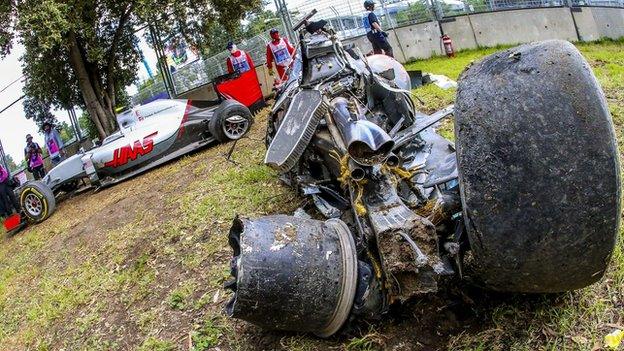
Fernando Alonso has been described as the luckiest man alive following his 180mph crash
The ease with which drivers can get out of an upturned car will be investigated before finalising the introduction of head protection next year.
Crashes similar to those suffered by Fernando Alonso in Australia on Sunday will be part of a risk assessment into the 'halo' device, planned for 2017.
The Spaniard's McLaren came to rest upside down after his 180mph crash at the season-opening race in Melbourne.
"We need to see if it could become more difficult to get out," he said.
Even if the halo made it more difficult for a driver to get out of his car in such a situation, that would not be enough to prevent its introduction.
The device is being investigated on a holistic basis and the FIA will weigh any potential extra problems with a driver's ability to remove himself from the cockpit against the increased safety.
But only if the cons outweighed the pros would head protection be delayed.
Is not being able to get out bad?

Kimi Raikkonen described the experience of driving with the halo as: "OK"
Alonso's team-mate Jenson Button said after the race that there was "no need for him to get out in that situation", adding: "It's better to have a halo system. They [safety workers] would tip the car over of course to get him out, so it takes a bit longer. But he was OK so it doesn't matter."
Governing body the FIA is aiming to make a final decision on the adoption of the halo by the end of May, following the completion of the risk assessment.
Its F1 director Charlie Whiting has told teams the device will be introduced if the process does not throw up any unanticipated risks and that he expects no opposition.
Even if a team did object, the FIA could force it through on safety grounds.
Analysing Alonso's crash
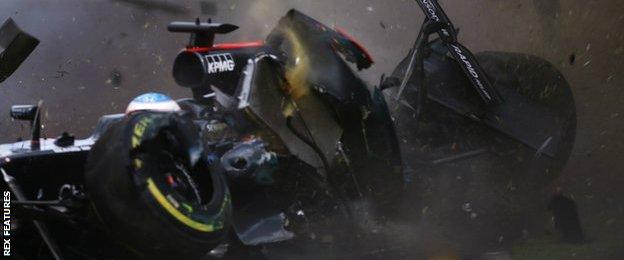
Alonso sustained a peak force of 46G during the crash
The FIA is still waiting for all the data to be recovered from the accident data recorders on Alonso's car before investigating exactly what happened.
The 34-year-old double world champion sustained a peak force of 46G during the crash, which he described as the biggest of his career.
It was triggered when Alonso's right front wheel caught the left-rear wheel of Esteban Gutierrez's Haas as he was trying to overtake on the approach to Turn Three.
All cars are fitted with a high-speed camera pointing back towards the driver's head to analyse its trajectory during an accident.
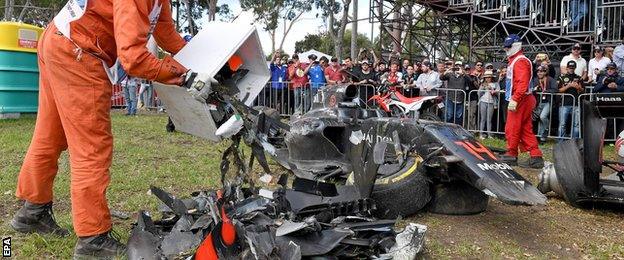
Marshals gather parts of Alonso's McLaren
The device works at 400 frames per second - 16 times faster than a normal camera - and it will reveal whether there would have been any danger to the driver's head had a halo been fitted.
This is considered highly unlikely, as the halo has been designed to be well out of reach of the helmet even in extreme scenarios.
These cameras, along with in-ear accelerometers worn by the drivers and data from sensors on the chassis, mean the FIA can build up a detailed picture of the events of an accident.
Alonso, who is one of the vast majority of drivers backing the introduction of extra head protection, said it was important to look into what would have happened in his accident and its aftermath had a halo been fitted.
How does the risk-assessment work?
The risk assessment into the halo will focus on the potential negatives of the device, and whether they are worse than what would have happened to the driver if it had not been fitted.
If the positives outweigh the negatives more often than not, that will be considered a satisfactory situation for the introduction of the halo.
Driver egress is only one of about nine different potential dangers that are part of the assessment.
Are there alternatives to the halo?
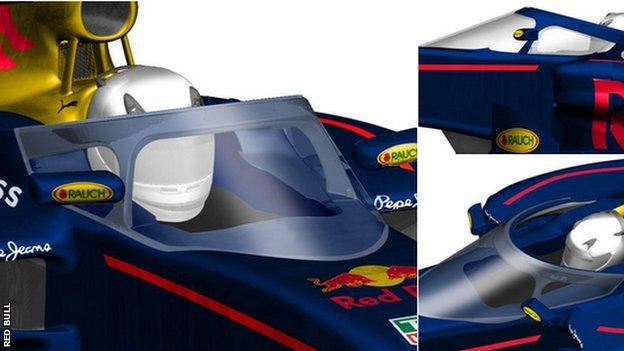
Red Bull's cockpit head protection design is further behind development than the 'halo' device
The halo, which was tested by Ferrari during the final pre-season test in Spain, is not the only head-protection system under consideration.
Red Bull has proposed an alternative solution, which has a similar elliptical loop above the driver's head but differs from the halo in having two side supports rather than one at the front and a screen around it.
But Whiting says that is "considerably further behind in development, it's never been tested, but it could offer additional protection".
The device may be ready for the FIA to test its efficacy in protecting against a flying wheel by the end of April.
The test fires a 20kg wheel and upright assembly at the car at 225km/h. The device has to deflect it without breaking.
The screen is one of the biggest potential problems with the Red Bull device - it is unclear whether this would cause visibility problems as a result of collecting debris or in wet weather.
- Published27 March 2016

- Published20 March 2016
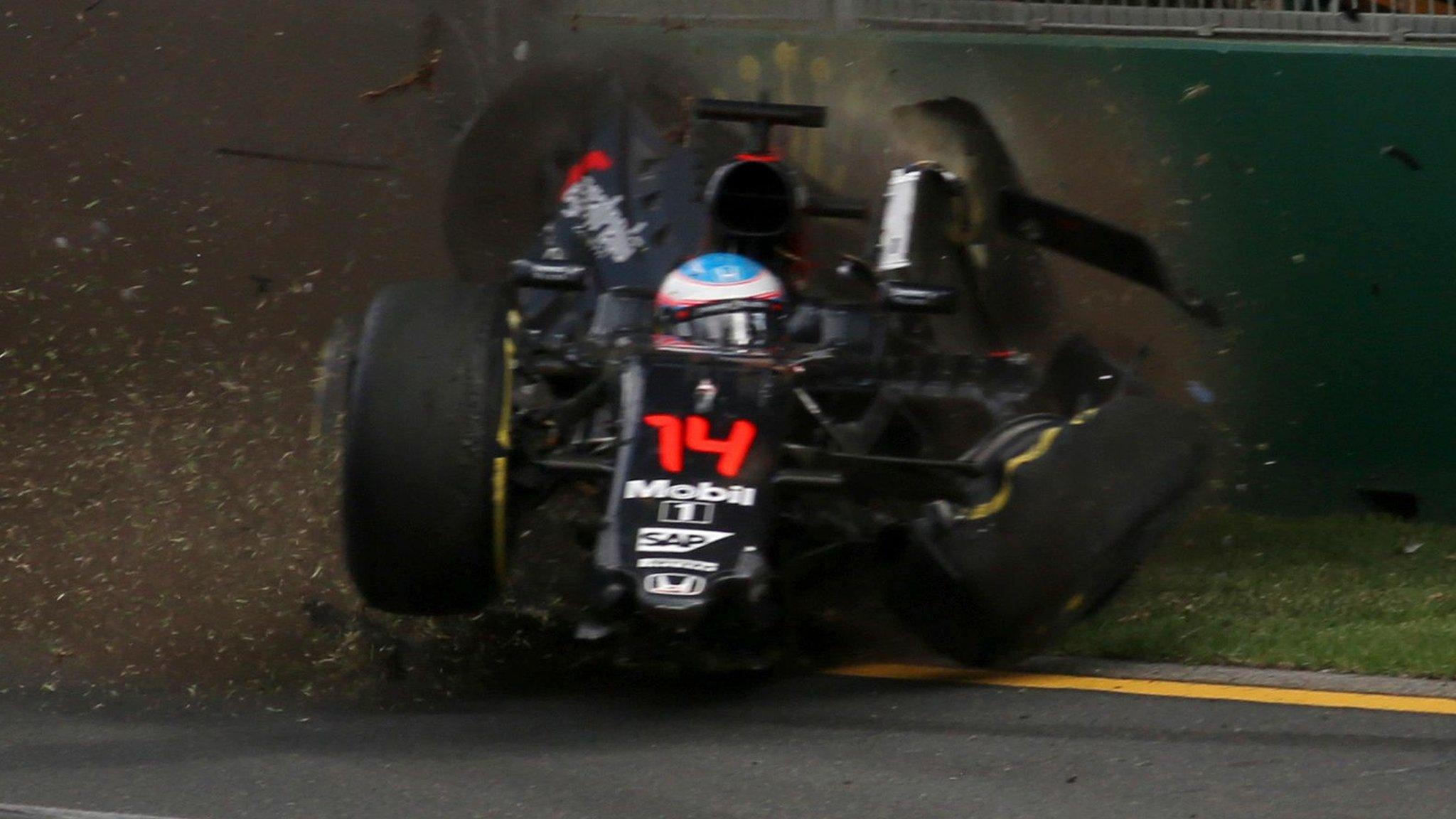
- Published20 March 2016

- Published18 December 2015

- Published2 November 2018

- Published26 February 2019
